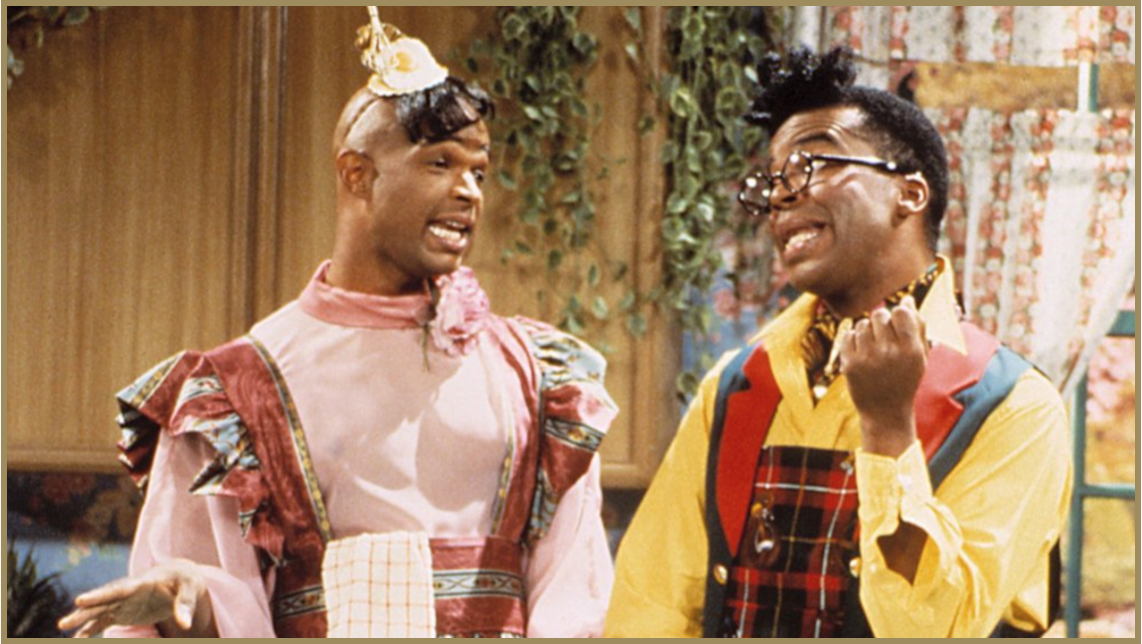
Welcome to Peabody Finds, the weekly newsletter for the Peabody Awards, offering our recommendations for powerful and thought-provoking media you should consider engaging. The newsletter offers deeper dives into Peabody-recognized programming (and beyond), with commentary, insights, and additional materials for context and expanded engagements. If you like it, subscribe here!
The Great Black American Comedy Wave of the 1990s
There’s a memorable scene in the 2016 mini-series The People vs. O.J. Simpson when the sequestered jurors get to watch TV—one TV—and they must choose a show as a group. They end up split between two ‘90s staples, Martin and Seinfeld, divided along racial lines. It’s not clear that this, precisely, happened in real life, but it was a good proxy for not only the trial’s outcome itself but also the way ‘90s TV worked. Black and white America often watched completely different shows.
While white audiences flocked to NBC’s “Must See TV” lineup anchored by the massive hits Friends and Seinfeld, Black audiences tuned in to The WB, Fox, and UPN for their own hits like Living Single, Girlfriends, and Sister, Sister, not to mention Martin. These shows, taken together, created their own recognizable subgenre—the ‘90s Black sitcom, an underappreciated chapter in television history. We’re honoring them here today for Black History Month, as Peabody, too, failed to recognize these shows in their time (while the white Frazier, Mad About You, Roseanne, and Seinfeld were among the Peabody-winning sitcoms of the ‘90s).
How did this subgenre come to be? Like many television movements, it was the result of a combination of technology, business forces, and creativity.
Every entertainment medium reflects its technology—its delivery system. For example, the switch from CDs to digital music in the early 2000s led to a new emphasis on individual songs, rather than entire albums. And no medium’s content has reflected its changes in technology as much as TV has, like the explosion of cable options that led to racier shows like The Sopranos at the turn of the millennium and the way that streaming led to suspenseful, addictive shows that encourage you to binge.
TV technology also specifically affects who viewers see on screen: TV cast diversity, or lack thereof, has always been closely tied to the technology delivering the shows to viewers. Early in TV history, for instance, programming was actually more diverse than it would become in the mid-1950s and beyond, because the entire nation was literally not wired yet for broadcasting. The medium was only available in large metropolitan areas, mostly in the Northeast, where viewers were more diverse and liberal-minded. Once TV spread to most of the country, TV became shockingly, stubbornly white for the decades to come, only budging when major change made good business sense.
One of those changes came in the 1970s. Once the Nielsen ratings company could track race, age, income, location, and level of education of viewers, targeting became paramount for advertisers, and thus for networks. Advertisers began to demand shows that attracted young adults—that is, people under 50—with high incomes who lived in big cities and had college degrees; the idea was that these people would buy more expensive stuff and become lifelong customers. This turned out to be good for diversity, pushing programming in a generally progressive direction because coming-of-age Baby Boomers liked shows that reflected modern times. This resulted not only in forward-thinking, issues-driven series like The Mary Tyler Moore Show, All in the Family, and Maude, but also predominantly Black shows like The Jeffersons and Good Times.
The 1980s and ‘90s brought one of TV’s most obvious technological jumps from a viewer’s perspective: the rise of remotes and cable television. Cable TV offered viewers many options beyond the traditional three major broadcast networks, ABC, CBS, and NBC. Now viewers could easily explore those options while using the remotes that began coming with their TVs; these were efficient, easy to use, and cordless. This opened the door to niche networks serving specific audiences, such as BET—Black Entertainment Television. The increased parsing of audience statistics with computers led to even more targeted marketing, and thus the segregation of the TV market.
This approach spread to network television, too, by the ‘90s, as companies attempted to launch not just new cable channels but new “major” broadcast networks, alternatives to the Big Three. Fourth-network upstart Fox pioneered the approach, launching its brand by targeting the audience the others had ignored, Black Americans. And that’s how we got series such as Living Single and In Living Color. The WB followed suit when it launched in 1995, giving us The Jamie Foxx Show and The Steve Harvey Show, among others. UPN, which started the same year, did the same, bringing us The Parkers and Moesha. As each network became successful, they got whiter; these shows gave way to That ’70s Show, Buffy the Vampire Slayer, The O.C., Dawson’s Creek, and Veronica Mars.
All of these series were marketed exclusively to Black audiences in a way that previous Black-centric network hits such as The Jeffersons, The Cosby Show, and The Fresh Prince of Bel Air were not. So we got diversity that at least allowed Black audiences to see themselves reflected in nuanced and satisfying ways on television. But we didn’t get diversity that introduced these great shows to white audiences, which would have the salutary effects of building white viewers’ empathy for Black characters and proving to (mostly white) TV executives that these shows deserved as broad an audience as possible. On the other hand, Black audiences got a large selection of shows meant just for them, which gave the shows a unique feel never quite duplicated before or since. Unlike The Cosby Show and The Fresh Prince, they weren’t forced to be cognizant of white viewers.
Take yourself back to the ‘90s—or appreciate the era’s Black comedy anew—with some of the best from the time, now on streaming.
‘Living Single’ (1993-98)
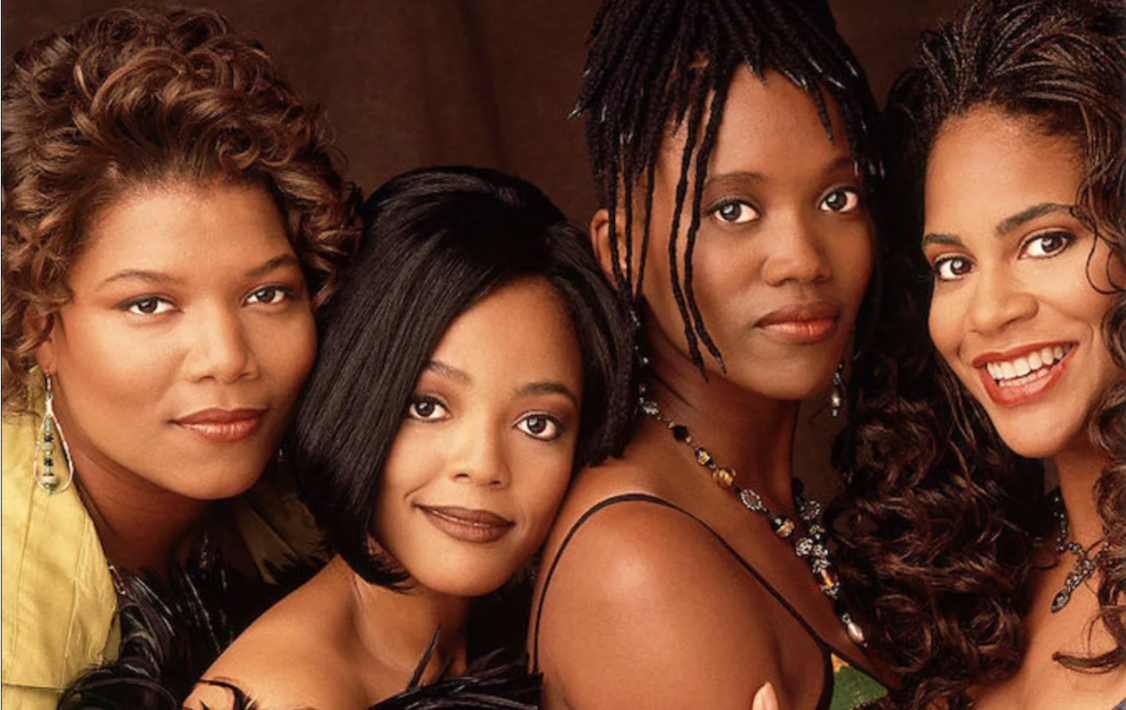
One of TV’s earliest hangout comedies, Living Single‘s appeal lies in its ability to invite you in, to make you feel like you’re sitting in the room with its appealing central friend group—four women and two men, all in their 20s, all single. It stars Queen Latifah as hard-charging Khadijah, a magazine editor; Kim Coles as her guileless cousin Synclaire; Kim Fields as the fashionable Régine; Erika Alexander as quippy lawyer Max; T.C. Carson as Max’s frequent partner in repartee, Kyle; and John Henton as friendly maintenance man Overton. It was Friends before Friends. Created by Yvette Lee Bowser, whose credits included The Cosby Show and A Different World, the series pioneered the idea of a chosen family as the center of a sitcom, with the sextet living in a Brooklyn brownstone together and sharing their personal and professional travails. Over the show’s five seasons, the characters change jobs, act on simmering sexual tensions, and grow up, taking us along for the ride.
Where to Watch: Hulu
‘Martin’ (1992-97)
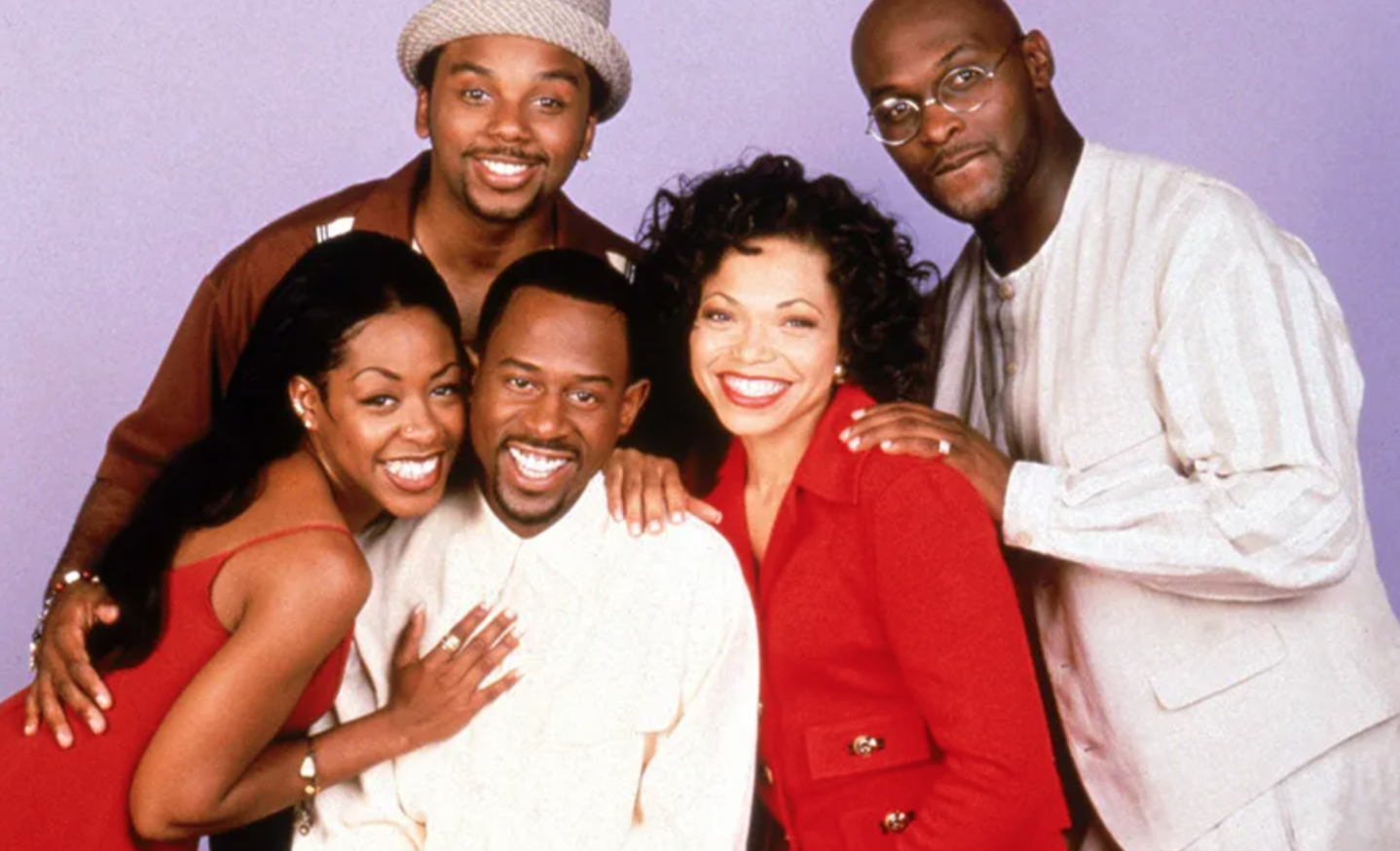
Starring and co-created by comedian Martin Lawrence, this Fox hit follows Lawrence’s character, Martin Payne, a wisecracking DJ who lives with his girlfriend Gina (Tisha Campbell) in Detroit. Lawrence also plays several other particularly exaggerated characters, like hair salon owner Sheneneh, Mama Payne, and unskilled martial artist Dragonfly Jones. But what drives the show is the main character’s struggle to balance his rebellious nature with his family-oriented instincts, as well as the characters he surrounds himself with (and the actors who play them). Standouts include Gina’s smart-mouthed friend Pam (Tichina Arnold), audacious pastor Reverend Leon Lonnie Love (David Alan Grier), and the inscrutable Bruh-Man (Reginald Ballard). The ultimate in pure comedy for comedy’s sake.
Where to Watch: HBOMax
‘Moesha’ (1996-2001)
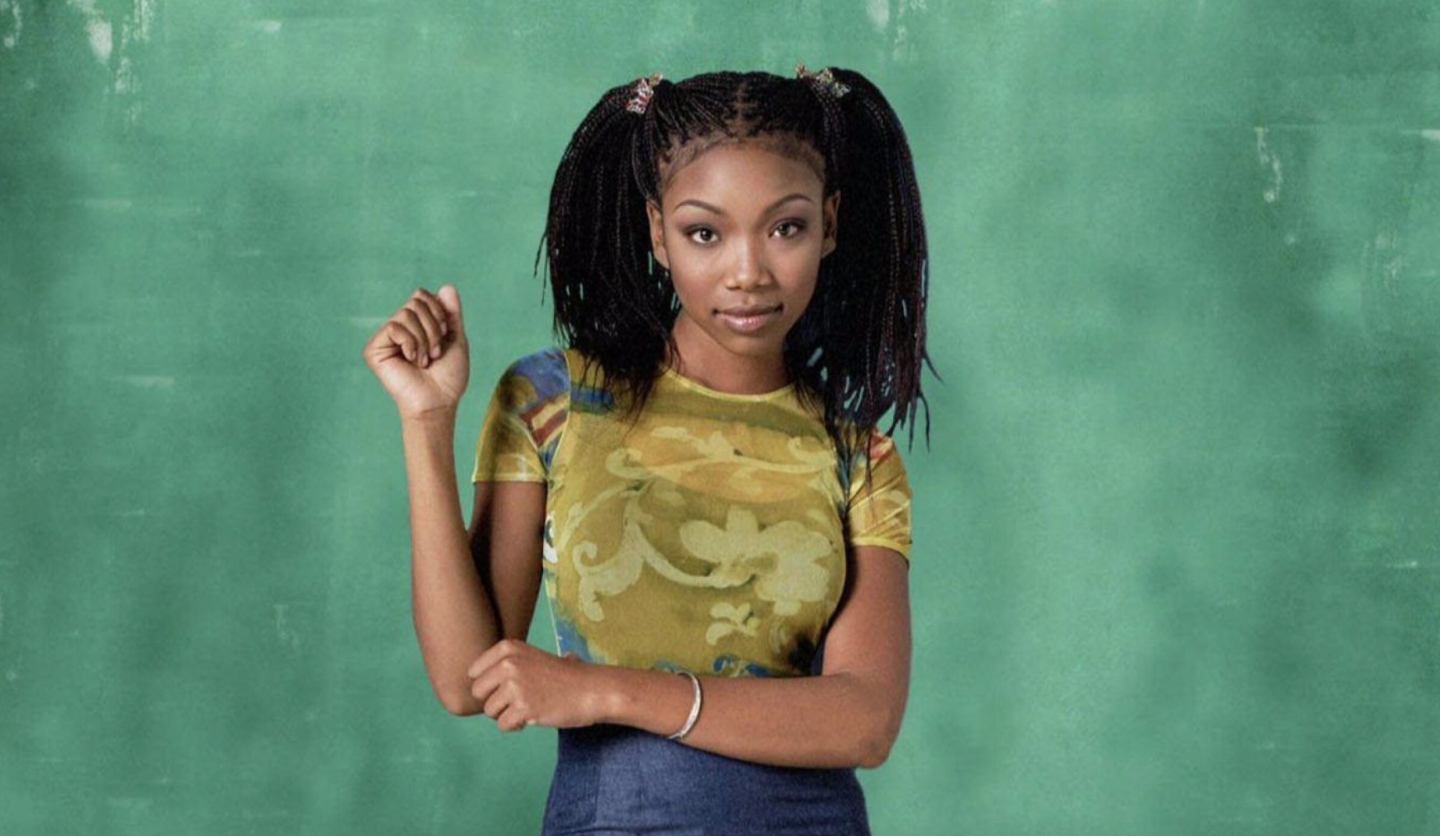
Moesha‘s six-season run on UPN introduced R&B singer Brandy Norwood as a winning actress, playing the title teenager living with her family in Los Angeles—her widower father Frank (William Allen Young) and her stepmom Dee (Sheryl Lee Ralph), who’s also an administrator at her school. The show deals with serious issues such as teen sex and pregnancy, drugs, racism, and sexism. In one controversial episode, Frank’s infidelity to his now-deceased wife is revealed when he turns out to be the father of a boy he pretended was his nephew. (This twist upset Ralph so much that she left the show.) In 1999, The New York Times called the show “the nonwhite hit nobody knows,” a telling mess of a phrase that speaks to TV’s intense segregation at the time. Still, critic Lawrie Mifflin summed the show’s approach up nicely, saying it tackled its subject matter “with prickly humor, remaining recognizably true-to-life and never saccharine.”
Where to Watch: Netflix
‘The Jamie Foxx Show’ (1996-2001)
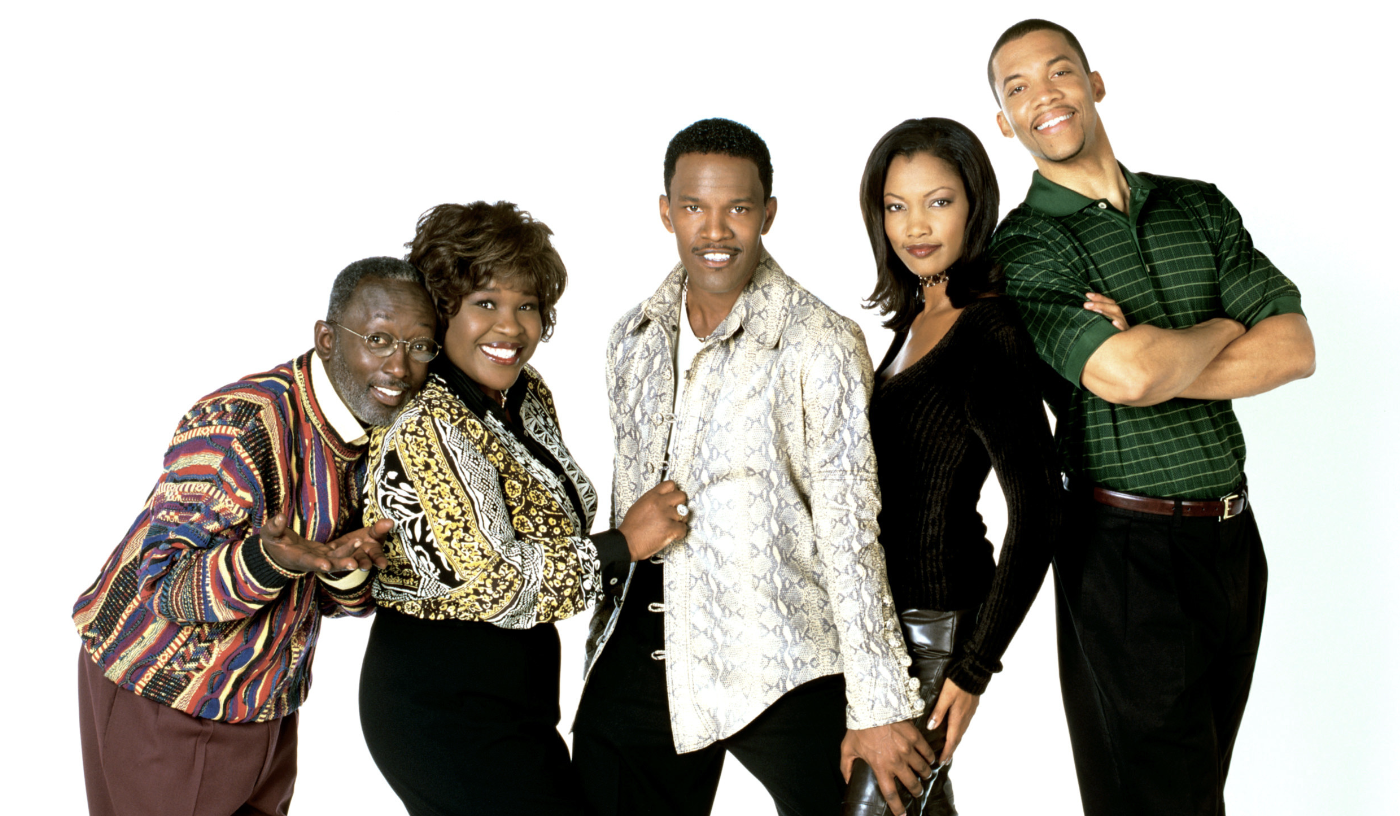
Foxx’s breakthrough came on In Living Color, the sketch comedy show that premiered on Fox in 1990 and launched the Black TV comedy wave. This WB sitcom bridged the gap between that and Foxx’s broader recognition as a serious actor and talented musician. In it, he stars as aspiring entertainer Jamie King, who comes to Los Angeles to make it big—but in the meantime must work at his aunt and uncle’s hotel to make ends meet. There, he meets glamorous love interest Fancy (Garcelle Beauvais) and snooty foil Braxton (Christopher B. Duncan). Suffice it to say that shenanigans ensue. Is it sitcommy? Absolutely, but it’s also the perfect showcase for Foxx’s multiple talents—acting, dancing, singing, impressions, there’s room for it all here.
Where to Watch: HBOMax
What If There Really Was a ‘Black Friends’?
Jay-Z takes meta commentary to a new level in the 2017 video for his song “Moonlight,” which is really a short film in which he and director Alan Yang meticulously re-create scenes from Friends with a modern Black cast that includes Issa Rae and LaKeith Stanfield. (The song itself is an allusion to the infamous Oscars mix-up in which the mostly white La La Land was accidentally announced as the Best Picture winner instead of the mostly Black Moonlight.)
